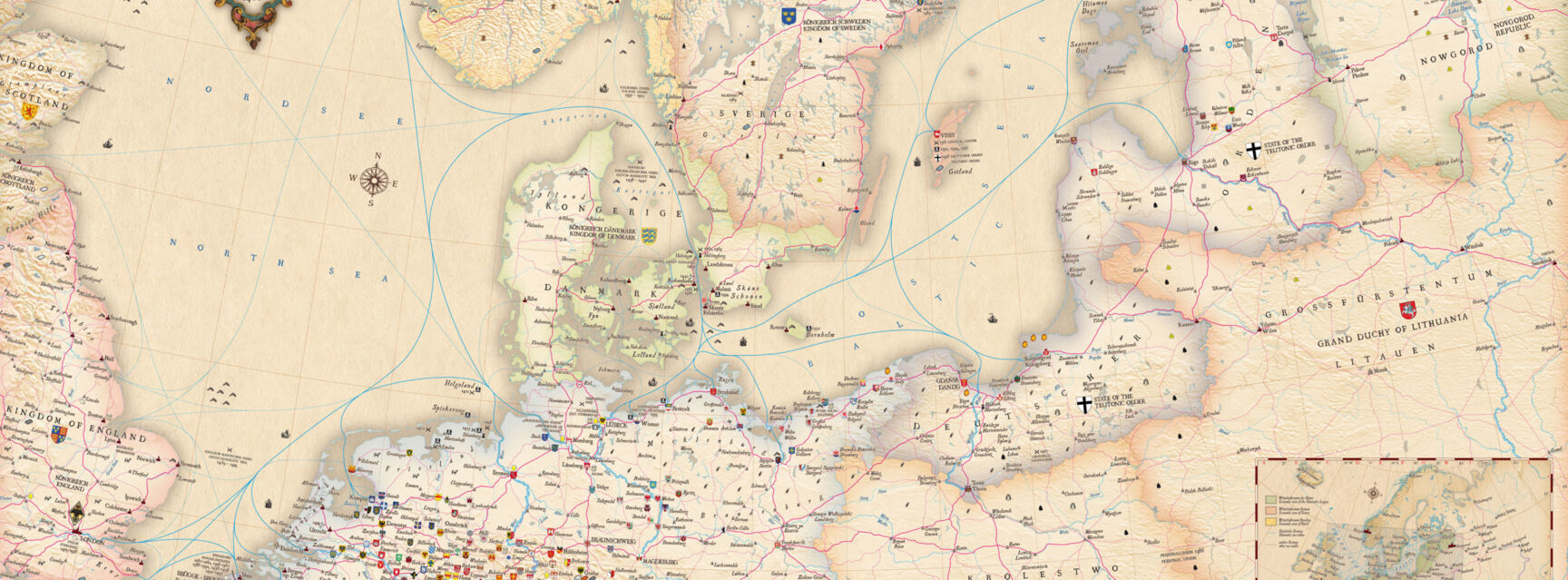Highlights
Juleum
The auditorium building of the former university, the Juleum Novum, was erected between 1592-1597 as a palacelike Renaissance building and is undoubtedly the most beautiful building in the town. Large windows harmoniously divide up the expanses of wall and the gables are richly decorated with sculptures, with the four faculties at the top: theology, jurisprudence, medicine and philosophy. The tower with its spiral staircase and slanting windows adorns the elevenpart coat of arms of Duke Julius von Braunschweig-Wolfenbüttel. Climbing the staircase, with its 153 steps, is rewarded with a unique view. The main entrance bears the university's "Samson with the Lion" coat of arms, and the surrounding figures represent music, grammar, astronomy, arithmetic and geometry – five of the seven liberal arts. Inside, there is an auditorium located on the ground floor. The Juleum Novum, with the two older wing buildings – the so-called Collegienfugeln (rebuilt 1575/76) – formed an impressively cohesive assembly of 16th and 17th century North-German architecture.
Read moreHausmannsturm
The oldest preserved town gate in Braunschweiger Land is Helmstedt Hausmannsturm. It is the most important – and only one – of the original four gate towers that is completely preserved. Today it is a landmark of the town. It is attested to for the first time in 1286. A Helmstedt resident named Hausmann lived there, who was both the tower guard and musician of the town. Two journeymen and an apprentice boy were at his side. As the town watchman, his job was to use his signal horn to signify the time of day and week. He also watched over the city in case of fire and used his trumpet call to sound the alert when threats arose. As the town musician, Hausmann of Helmstedt was required to play on special occasions, alongside his helpers from the town. Even today, the watchmen tradition is maintained. From April to October, you can experience the call of the week every Saturday of the month at noon.
Read moreSt Stephani Church
The Stephani church was the first parish church on the site and, at the time of the founding of Academia Julia, it was for more than a hundred years also the university church. At the highest point of the town, it is also called Ecclesia in Monte (Latin for "church on the mountain"). In all likelihood, the church was a residence for merchants – an old trading place where wayfaring merchants would trade on their annual journeys. This is where the name St. Stephani probably comes from, since Stephanus is among other things the patron saint of travelling waggoners. But there is another possible origin: Helmstedt once belonged to the bishopric of Halberstadt with its patron saint of Stephen, so there are numerous Stephanus or Stephani churches in the region. Today's three-nave late-Gothic hall church was built before 1300 and extensively renovated at the beginning of the 15th century. This is where it was furnished with its huge westwork. The planned tower was never built.
Read moreSt Ludger's Abbey
The former Benedictine monastery now houses the Catholic Parish Church of St Ludger and serves as a meeting place, a conference centre, and group accommodation with an atmosphere steeped in history. The former monastery was dissolved in 1802 and now belongs to the Episcopal See in Hildesheim. The monastery was founded by the eponymous Saint Ludger, who is also on the town's coat of arms. In 795, probably alongside the later Kaiser Charles the Great, he moved through what is today Helmstedt.
St Marienberg's Abbey
St Marienberg's Abbey was founded in 1176 as an Augustine chapter of canonesses. The fourwinged courtyard is grouped around the cloister, where members of the convent have always been buried. The east wing borders the former pleasure garden of the domina. The monastery church is adjacent to the southern wing of the cloister square. The monastery was architecturally modified several times, especially in the Late Middle Ages, in the Baroque period, and most recently in the 19th century. With the Reformation, the monastery was transformed into an evangelical convent. Since the modernised monastic order of 1989 (opening up to married women and the abolition of residential obligation), the convent has been coming to work together and to pray in the cloister. Making the cloister accessible to the public is one of the tasks of the convent. Other focuses of the convent include liturgies of the hours, worship services, seminars on spiritual themes, and exhibitions. The former chapter hall houses the treasure chamber, where precious medieval paraments are exhibited. One of the oldest buildings, the Heininger Antependium, was built in the second half of the 13th century. Originating from the old convent in 1862, today there is still weaving, embroidery and restoration work being done in the parament workshop operated by the Veltheim Foundation on these historical premises. Supported by the latest technologies and with great craft, both textile art works and reconstructions are produced here. The restoration department is responsible for the preservation of precious historical textiles.
Read moreContact
City of Helmstedt
Tourist Information at the "Bürgerbüro" (entrance at Holzberg)
Markt 1, 38350 Helmstedt
T. +49 5351 17 17 17
E. tourismus@stadt-helmstedt.de
Travel options
The town of Helmstedt is located in the eastern part of Lower Saxony, close to Braunschweig and Wolfsburg. You can reach us by car via Bundesautobahn 2 or Bundesstraße 1. The regional railway between Braunschweig and Magdeburg stops in Helmstedt hourly, and we are an intercity stop.

